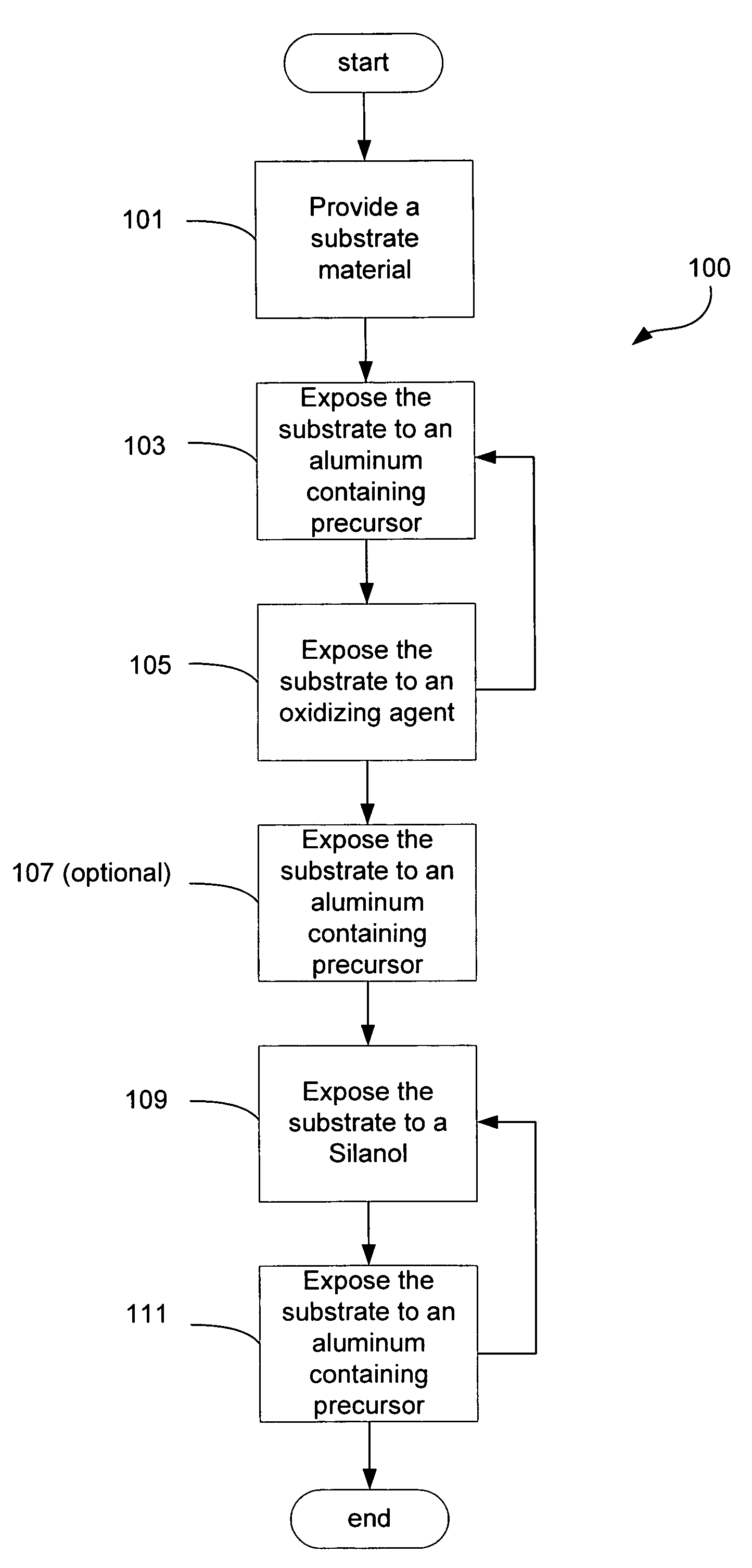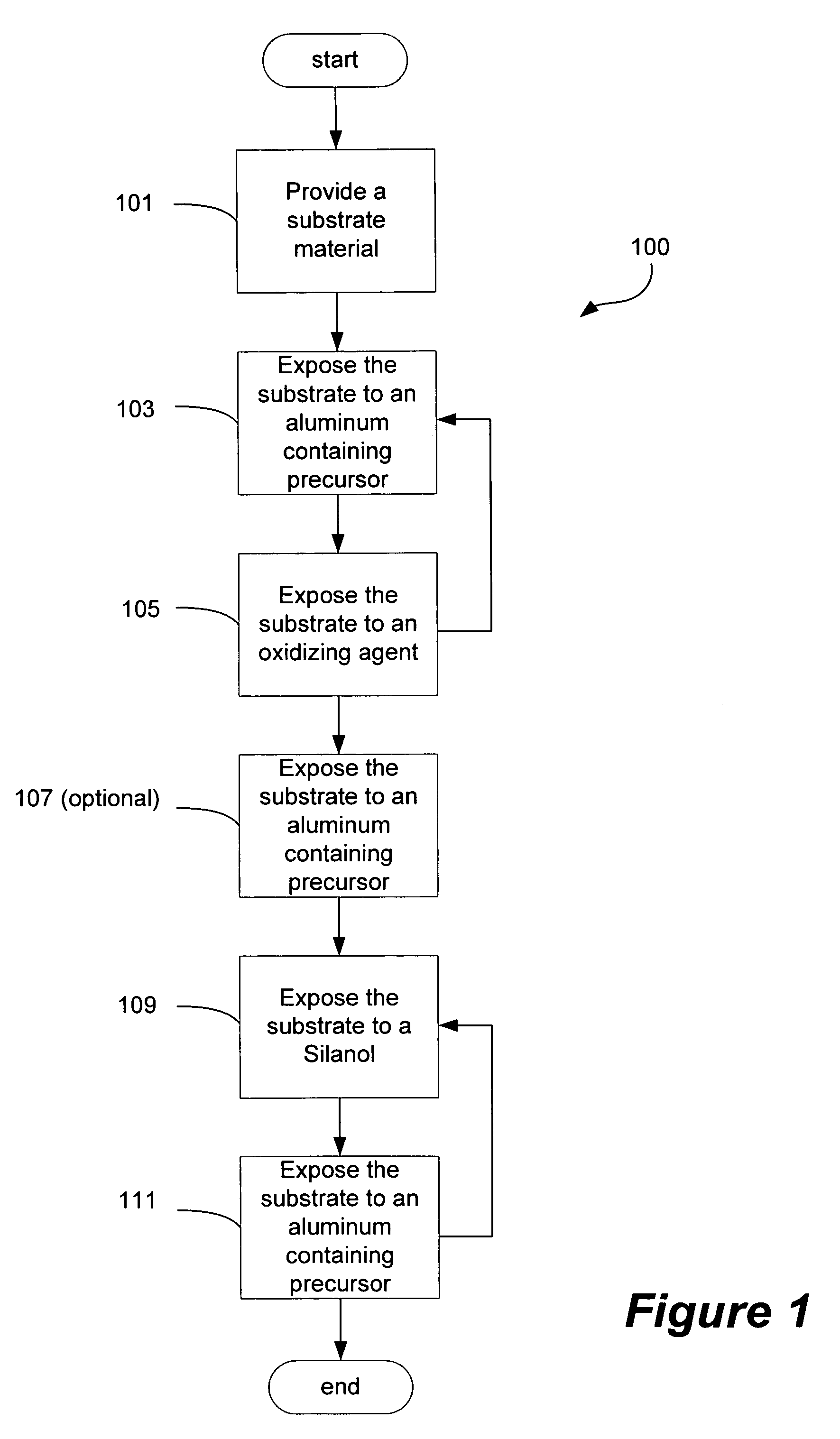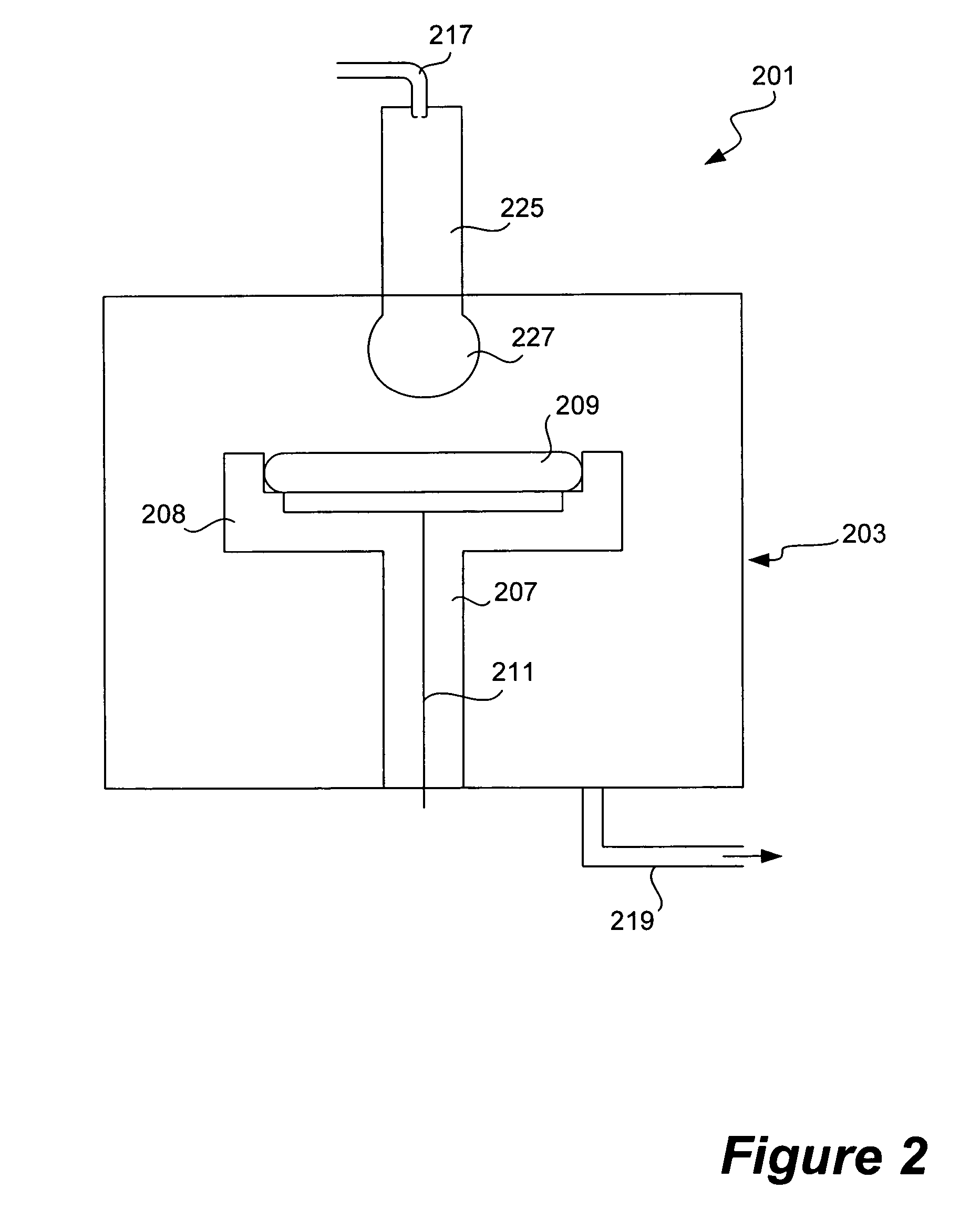Silica thin films produced by rapid surface catalyzed vapor deposition (RVD) using a nucleation layer
a technology of surface catalysis and thin films, applied in chemical vapor deposition coatings, coatings, metallic material coating processes, etc., can solve the problems of increasing the depth to width of features, the deposition rate is very low, and the traditional cvd technique cannot provide adequate conformal films in these high aspect ratio features
- Summary
- Abstract
- Description
- Claims
- Application Information
AI Technical Summary
Benefits of technology
Problems solved by technology
Method used
Image
Examples
examples
[0046]The following examples provide details concerning the implementation of an embodiment of the present invention and beneficial results. It should be understood the following is representative only, and that the invention is not limited by the detail set forth in these examples.
[0047]In one example of a preferred embodiment, an Al2O3 nucleation layer was deposited over a high aspect ratio feature (i.e., a trench) on a substrate by placing a substrate material (i.e., a silicon wafer), in a reaction chamber and then exposing the substrate to tri-methyl-aluminum for one second. This was followed by a five-second reactor purge, wherein an inert gas was introduced into the reaction chamber. Next, the substrate was exposed to water, an oxidizer, by opening a valve separating a container with water vapor at 24 Torr and 25° C. for one second. The process was repeated for four cycles, followed by a half cycle (just the tri-methyl-aluminum deposition) before the application of a silica la...
PUM
| Property | Measurement | Unit |
|---|---|---|
| temperatures | aaaaa | aaaaa |
| temperatures | aaaaa | aaaaa |
| pressures | aaaaa | aaaaa |
Abstract
Description
Claims
Application Information
 Login to View More
Login to View More - R&D
- Intellectual Property
- Life Sciences
- Materials
- Tech Scout
- Unparalleled Data Quality
- Higher Quality Content
- 60% Fewer Hallucinations
Browse by: Latest US Patents, China's latest patents, Technical Efficacy Thesaurus, Application Domain, Technology Topic, Popular Technical Reports.
© 2025 PatSnap. All rights reserved.Legal|Privacy policy|Modern Slavery Act Transparency Statement|Sitemap|About US| Contact US: help@patsnap.com



